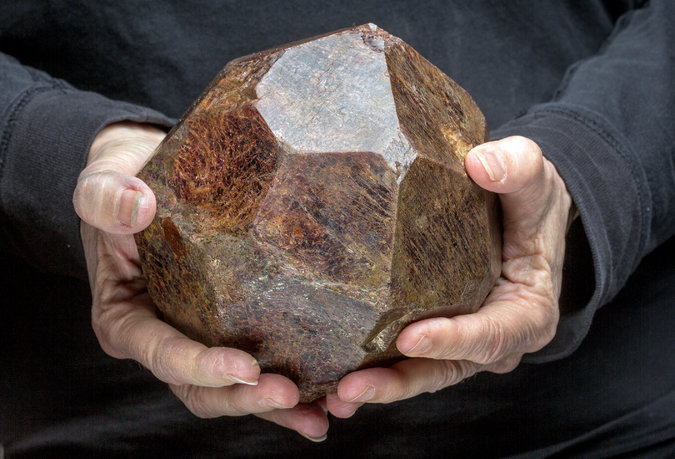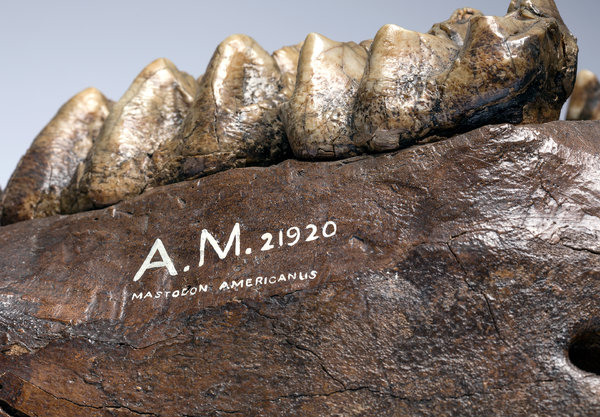The American Museum of Natural History is a lot of things to a lot of people. To the wealthy philanthropist, it’s a venue for black-tie galas in the shadow of a 94-foot blue whale. To the young, it’s the setting for a movie franchise starring Ben Stiller that single-handedly made the educational diorama relevant again.
And then there are the scientists who avail themselves of the 33 million artifacts and specimens on exhibition and in storage at the museum, like a mastodon jaw.
Only 2 percent of the collection is on view, so any visiting geologist who wants to see what may be the museum’s most magnificent mineral must make an appointment with the Department of Earth and Planetary Sciences. That is the current repository of the once famed, now forgotten “Subway Garnet” — although that name is only half correct.

The Subway Garnet is currently in storage at the American Museum of Natural History. Credit Fred R. Conrad for The New York Times
The almandine garnet is as rare as it is large. A nine-pound bundle of iron and aluminum nearly six inches in diameter, the gem resembles nothing so much as Fred Flintstone’s bowling ball. It was discovered on 35th Street, between Seventh Avenue and Broadway — or rather eight feet under the street, during a sewer excavation in August 1885. It is estimated to be 430 million years old, and its nickname was bestowed by journalists who no doubt thought a subway dig would be a more genteel provenance than a sewer trench. (The garnet was unearthed years before Manhattan’s underground train tunnels would be dug.
“It’s rare in the sense of the size and perfection of it,” said George Harlow, the curator for the earth sciences department at the museum. “They’re usually all broken up at that size.”

The jaw of a mastodon, also part of the museum’s collection but not on display to the public. Credit Fred R. Conrad for The New York Times
Indeed, Columbia University is in possession of a once enormous almandine garnet that was discovered in the Adirondacks, near Gore Mountain. But the easily breakable block has since greatly diminished, thanks to decades of psychology students who broke off keepsake pieces when they defended their theses. When the Subway Garnet was discovered, it became the darling of contemporary scientific journals, but its origin story seems more suited to the gossip columns of the day. William Niven, the owner of a business that sold gemstones and minerals, claimed he picked up the garnet as he was passing by the site, just after an unnamed laborer dumped it on the street during the excavation. Dr. Niven then promptly sold it to one George F. Kunz (whom Professor Harlow describes as “the P.T. Barnum of mineralogists”) for $100. But as early as 1908, there are accounts of Kunz stating that he himself had found the garnet.
From there the gem made its way to the New York Mineralogical Club and then, in 1968, to the American Museum of Natural History, where it was proudly displayed in a case at the entrance to Mineral Hall until its relegation to a drawer on the fourth floor.
As for whether this remarkable link to our Paleozoic past might be excavated from storage, there is hope. “Nothing’s been finalized, but I believe plans are afoot,” said Professor Harlow, who has worked at the museum for 40 years. “I’d certainly like to see it available to the public before I retire.”
Courtesy: Article By
Key: WFS,Riffin T Sajeev,Russel T Sajeev,World Fossil Society,Garnet



 January 8th, 2016
January 8th, 2016  Riffin
Riffin  Posted in
Posted in  Tags:
Tags: 